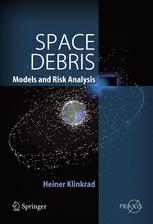

Most ebook files are in PDF format, so you can easily read them using various software such as Foxit Reader or directly on the Google Chrome browser.
Some ebook files are released by publishers in other formats such as .awz, .mobi, .epub, .fb2, etc. You may need to install specific software to read these formats on mobile/PC, such as Calibre.
Please read the tutorial at this link: https://ebookbell.com/faq
We offer FREE conversion to the popular formats you request; however, this may take some time. Therefore, right after payment, please email us, and we will try to provide the service as quickly as possible.
For some exceptional file formats or broken links (if any), please refrain from opening any disputes. Instead, email us first, and we will try to assist within a maximum of 6 hours.
EbookBell Team

4.8
94 reviewsIn Space Debris Models and Risk Analysis the authors will provide the reader with a comprehensive background to understand the various sources of space debris, and to assess associated risks due to the current and future space debris environment. Apart from the non-trackable objects produced by historic on-orbit fragmentation events, several other sources of space debris will be outlined. Models will be described to allow the generation and propagation of the different debris families and permit the assessment of the associated collision risk on representative target orbits for present and future conditions. Using traffic models and possible mitigation practices, the future evolution of the space debris environment will be forecast. For large-size, trackable objects methods will be described for conjunction event predictions and related risk assessments. For hazardous re-entry objects, procedures will be outlined to enable the prediction of re-entry times and likely impact areas, to assess uncertainties in these factors, and to quantify the risk due to ground impact. Models will also be described for meteoroids, which prevail over space debris at small particle sizes.